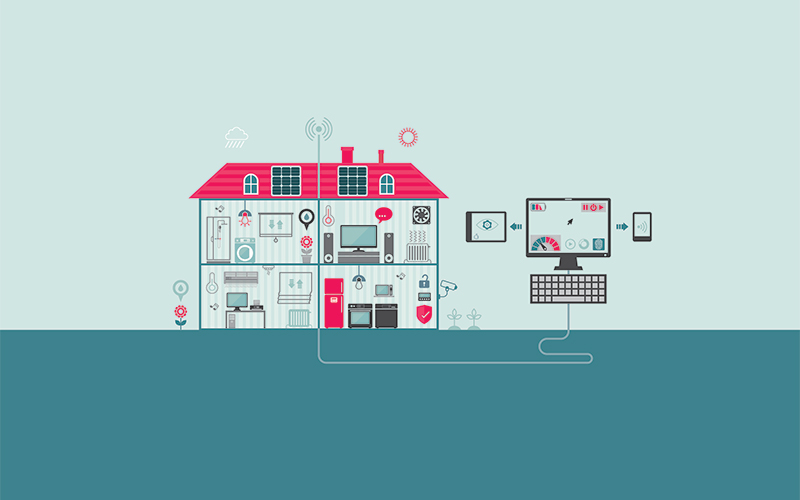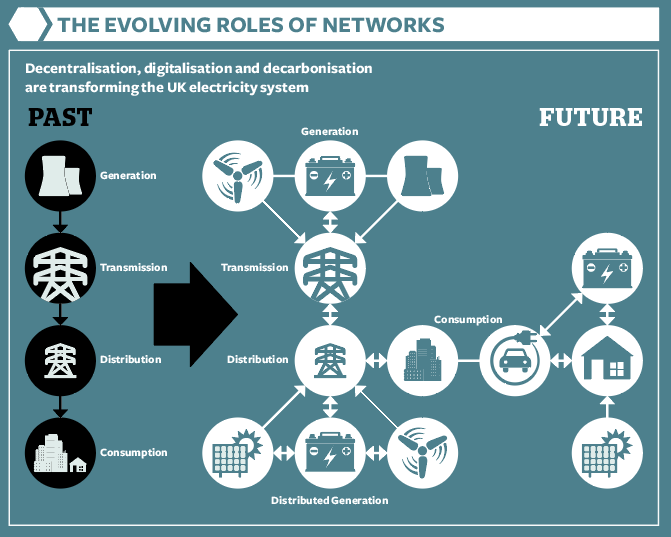Decentralising the UK energy system
In the last five years, decentralisation of the UK electricity system has changed from being a future trend talked about in boardrooms and conferences to an accepted reality, says Dr Craig Edgar at SNC-Lavalin

Today, the majority of new electricity-generating sources are connected to the distribution network, not the transmission network. However, energy system decentralisation will extend further than merely the location and size of the generating plant, bringing challenges and opportunities beyond ensuring grid stability.
While there is a desire to open the market beyond the big six utility providers, historically (and indeed it is still largely true) there have been few options for the ordinary person other than purchasing their electricity from one of the large utilities, or from a smaller utility that operates a similar business model.
Real drivers for change
However, this is set to change via a range of technologies, including solar panels, heat pumps and batteries. Some of these are already established, others are just starting to be commercially deployed. The real drivers for change, though, will be digitalisation and a change in people’s behaviour and mindset.
The vanguard for this is the roll-out of smart meters and associated smartphone apps that enable people to view their electricity consumption on their phone in real time. Thanks to smart home devices, they can then manage their usage from their phone – even if they are not in the house. In the future, there is every reason to expect that the scope of control will increase to include the supply of electricity into the house, as well as how it is being used.
It is important to realise that the technologies required for this are already available. A homeowner can buy a solar panel and battery storage system from IKEA and fit smart home devices; their home will look like something that, a decade ago, would only have appeared in a science fiction movie. However, if they want to stay connected to the grid (and most people would, for security of supply) they still have to buy electricity as they have for the past 50 years – metered by the kWh from a registered supplier.
With blockchain-enabled peer-to-peer electricity trading, you could buy power from a neighbour’s solar panel to charge your electric vehicle, drive to the shops and then potentially sell power into the grid while collecting your groceries
Power to the people
Here enters another change, with the onset of blockchain technology and its potential to enable peer-to-peer trading of electricity. During the past 12 months we have seen this being trialled on UK distribution systems. This could create a scenario where you could buy power from a neighbour’s solar panel to charge your electric vehicle, drive to the shops and then potentially sell power into the grid while collecting your groceries. This could all be handled through software with preset rules – it wouldn’t require an individual to be sat in front of a virtual electricity trading desk!
This is not likely to occur in the next few years, as it would require hugely significant changes in market structure and legislation – but for those of us in the electricity industry it is interesting to consider the challenges it could pose for our businesses.
For technology providers it is an exciting prospect, with a potentially huge future market for devices such as heat pumps and batteries. For utility companies that generate revenue from selling electricity, and the supply chain that supports the construction and maintenance of the large scale central generation and transmission assets, it is a more challenging prospect. How do these businesses remain relevant in a decentralised, digital world, where consumers buy their electricity generation devices from retail outlets and sort out their energy needs over their mobiles in a peer-to-peer environment with their neighbours?
 Reshaping the energy market
Reshaping the energy market

Of course, this is an extreme view; the security and predictability provided by centralised generation and transmission of electricity are likely to be required for the foreseeable future.The absolute reliance of consumers on this system is already diminishing, though, and we will continue to see this reliance wane. For the first time, there will be genuine competition in the sector – not just from multiple suppliers selling an equivalent product, but from entirely new business models.
The incumbents need to prepare for the impending change. We can already see a shift in focus from large fossil-fuelled generation to distributed, renewable generation, and in the likes of Centrica’s pushing of Hive technology into the home. For the supply chain, one transformation can be seen in that heavy engineering is becoming less mission critical, while software is becoming ever more important.
Decentralisation of energy is much more than just a feature of whether a generating asset is connected to the distribution network or the transmission network. Instead, the opportunities and challenges of decentralisation should be thought of in the context of a paradigm shift in how society uses and buys the electricity that will power our devices, heat our homes and move our cars.
By Dr Craig Edgar, Chief Engineer – Project Development, SNC-Lavalin






Follow us
Advertise
Free e-Newsletter